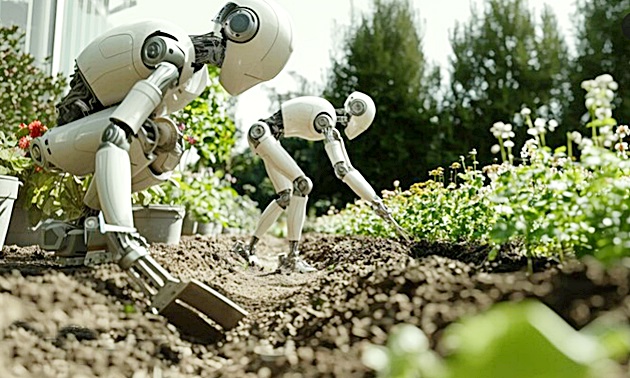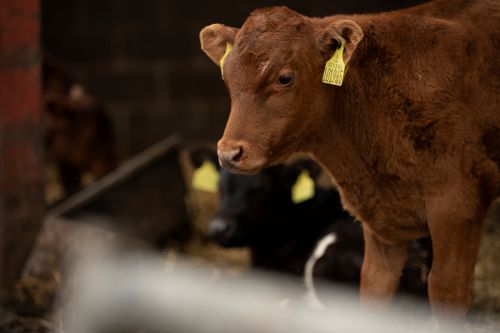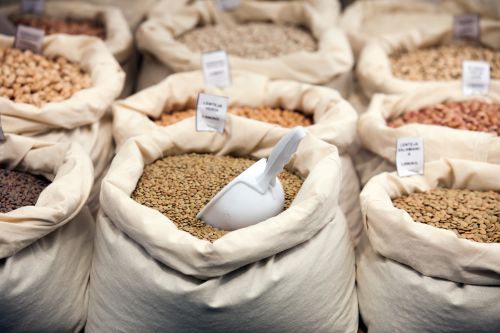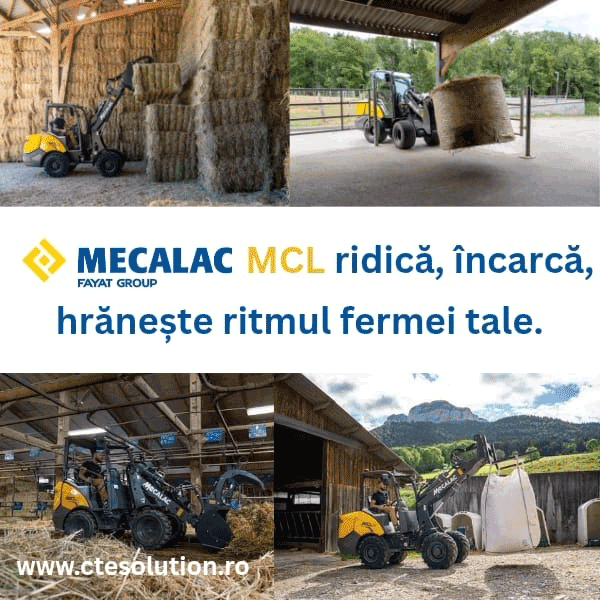752

'Robo' Farmers Ready to Hit the Fields—Once Data Rights and Algorithms Plow a Straight Furrow
An opinion published by the Euractiv Advocacy Lab suggests that robotic farmers are poised to transform agriculture, provided that data rights and algorithms pave the way for fair and effective implementation.
A Natural Transition
From oxen and horses to tractors, high-yield crop varieties, and synthetic fertilizers, agriculture has always showcased human creativity and ingenuity in the pursuit of production and food security. Today, agriculture is no longer just about food production.
Modern agriculture focuses on efficiency and sustainability while meeting the complex demands of a rapidly growing global population.
Increasingly, agriculture is integrating advanced technologies into traditional methods, including genetic engineering, precision farming, robotics, and drones.
The global agricultural robotics market is expected to grow from $13.4 billion in 2023 to approximately $86.5 billion by 2033.
The Robot Revolution
A great deal can be achieved with machines and robots. Enhancing agricultural precision from planting to harvesting minimizes waste through consistent and predictable processes. Precision fertilization reduces costs and protects ecosystems, while precision seeding and harvesting lower labor costs.
There is no denying that machines perform tasks faster than humans, do not tire, and do not fall ill, thus increasing productivity and delivery times.
In a sector where farmers struggle to harvest due to a shrinking workforce, accomplishing the task without excessive reliance on human labor is crucial.
Several types of robots are currently being tested in agricultural environments:
- Field robots include autonomous tractors and self-driving machines.
- Weeding robots use advanced imaging and machine learning techniques to identify and remove weeds.
- Seeding and planting robots ensure accurate seed placement, depth, and spacing.
- Harvesting robots pick fruits, vegetables, and crops in a fraction of the time required by humans.
- Monitoring and data-collection robots include drones for aerial imaging, crop surveillance, and livestock tracking.
- Ground-based monitoring robots gather data on soil conditions, crop health, and other critical parameters.
Investing in Innovation
According to a report by the European Circular Bioeconomy Fund (ECBF), for every farmer under 35 years old in Europe, there are nine farmers over 55. Additionally, nearly two-thirds of European farmers have no successors to take over their farms.
Spain, France, Germany, Italy, and the United Kingdom face a shortage of hundreds of thousands of agricultural workers during key harvest periods.
To address this and other challenges faced by European farmers, the EU’s primary research funding program, Horizon Europe, invests in projects supporting rural digitization and agri-food technologies.
One such project was Robs4Crops, which concluded on December 31, 2024. Coordinated by Wageningen University & Research, the project brought together a consortium of 16 partners from seven European countries. Launched in 2021 with a budget of €7.9 million, it ran for four years.
Robs4Crops conducted extensive testing of commercial robots alongside farms and businesses in France, Greece, Spain, and the Netherlands. Its key objectives included addressing labor shortages in agriculture, improving productivity and sustainability, and demonstrating the precision of agricultural robotics.
Another Project
Another EU-funded project was Robotics for Microfarms (ROMI), which developed an open and lightweight robotics platform. It introduced a weeding robot, a farmer’s dashboard featuring a “cablebot” (a camera that moves along a cable to capture crop images), and a 3D imaging system for plants. These technologies help small farms reduce weeds and monitor crops more effectively.
Like Robs4Crops, ROMI aimed to reduce manual labor, increase productivity, and improve crop monitoring in small-scale organic and polyculture farms.
Other robotics companies include the French startup Naio Technologies, which produces weeding robots for vineyards and an autonomous robot for repetitive farm tasks. Smart Farm Robotix from Bulgaria is developing robotic weeding machines suited for the terrain commonly found in Southern Europe.
Fields of Robots Forever?
With the enormous potential and significant investments in agricultural robotics, it is easy to imagine a future where robots are the only occupants of the fields we pass by. However, the reality is more complex.





